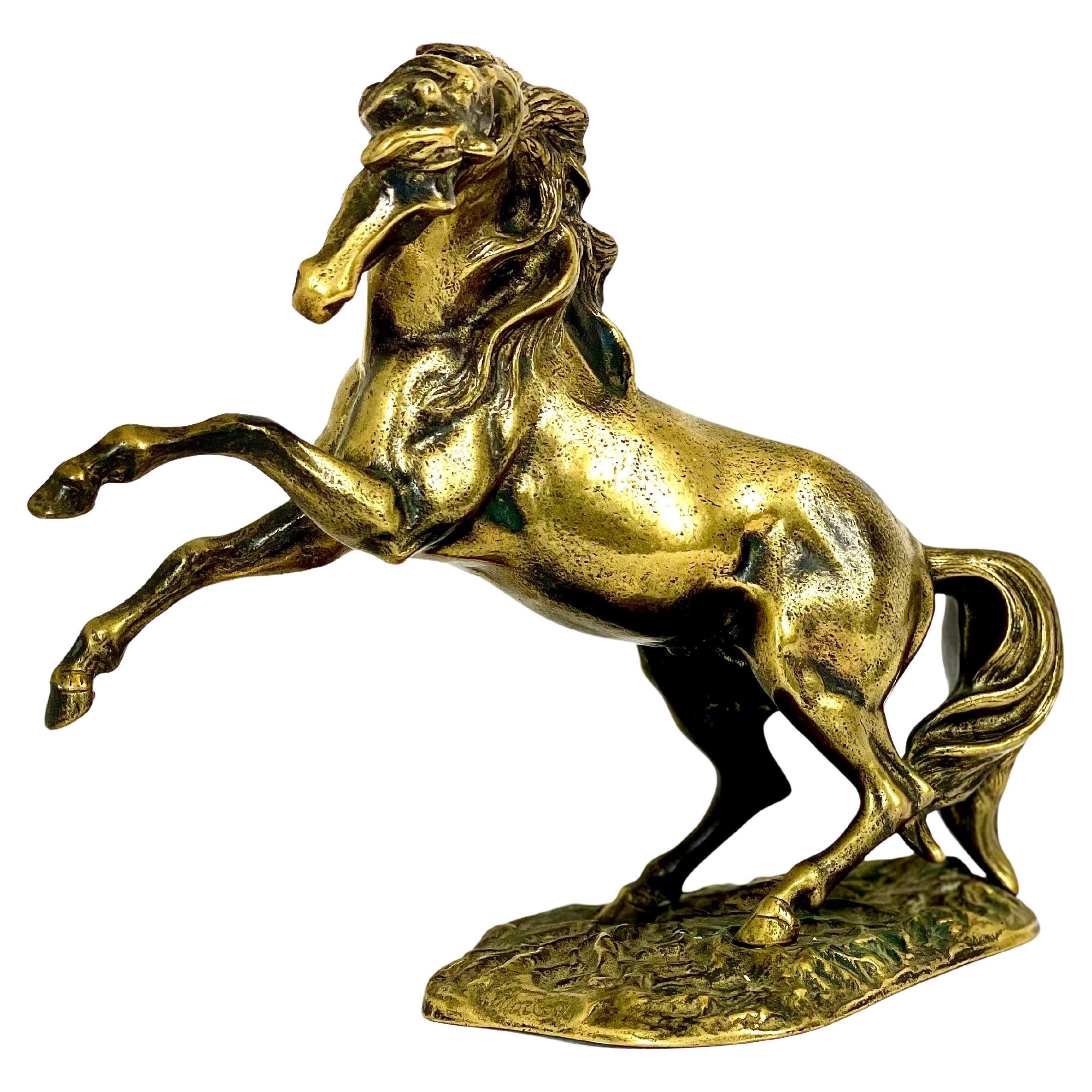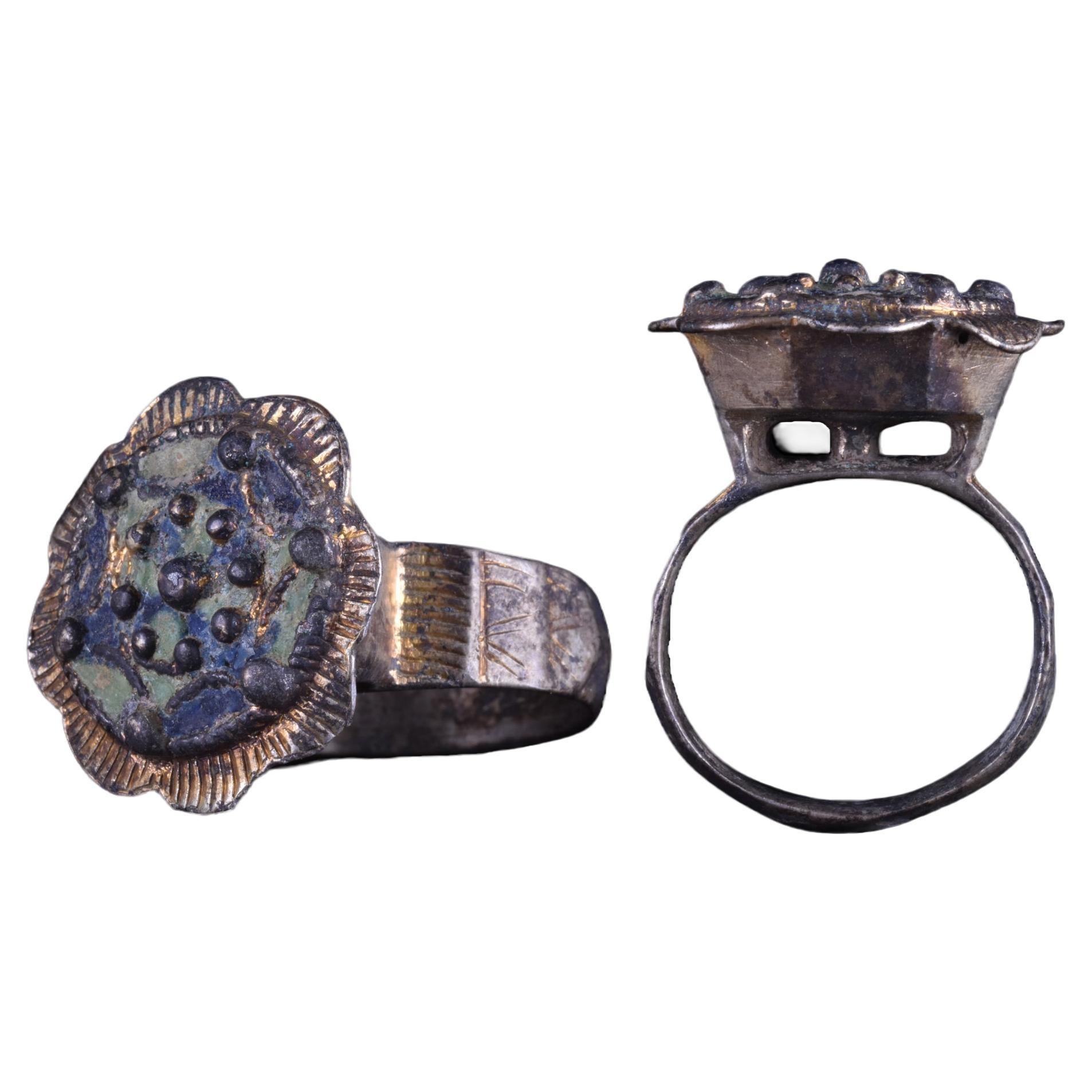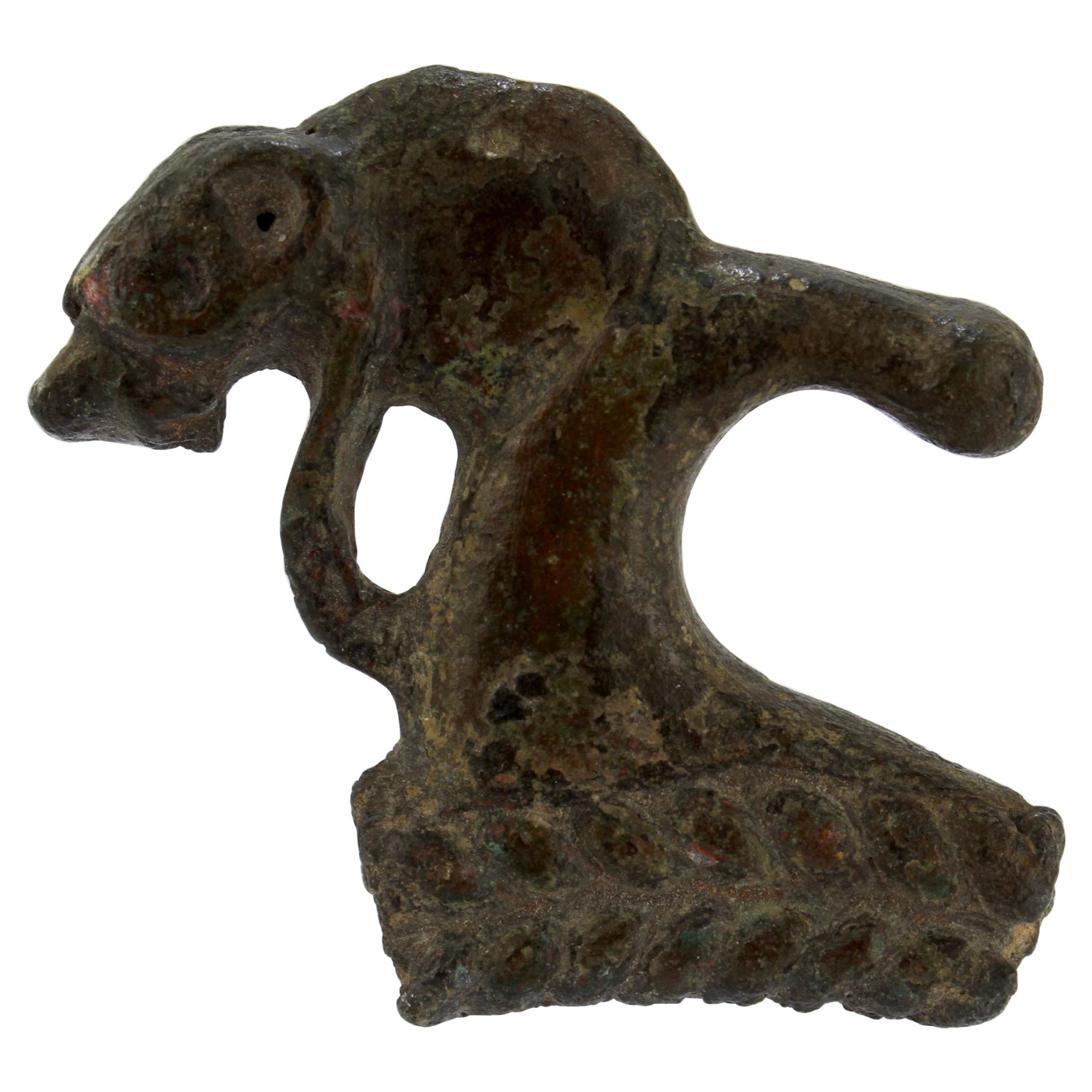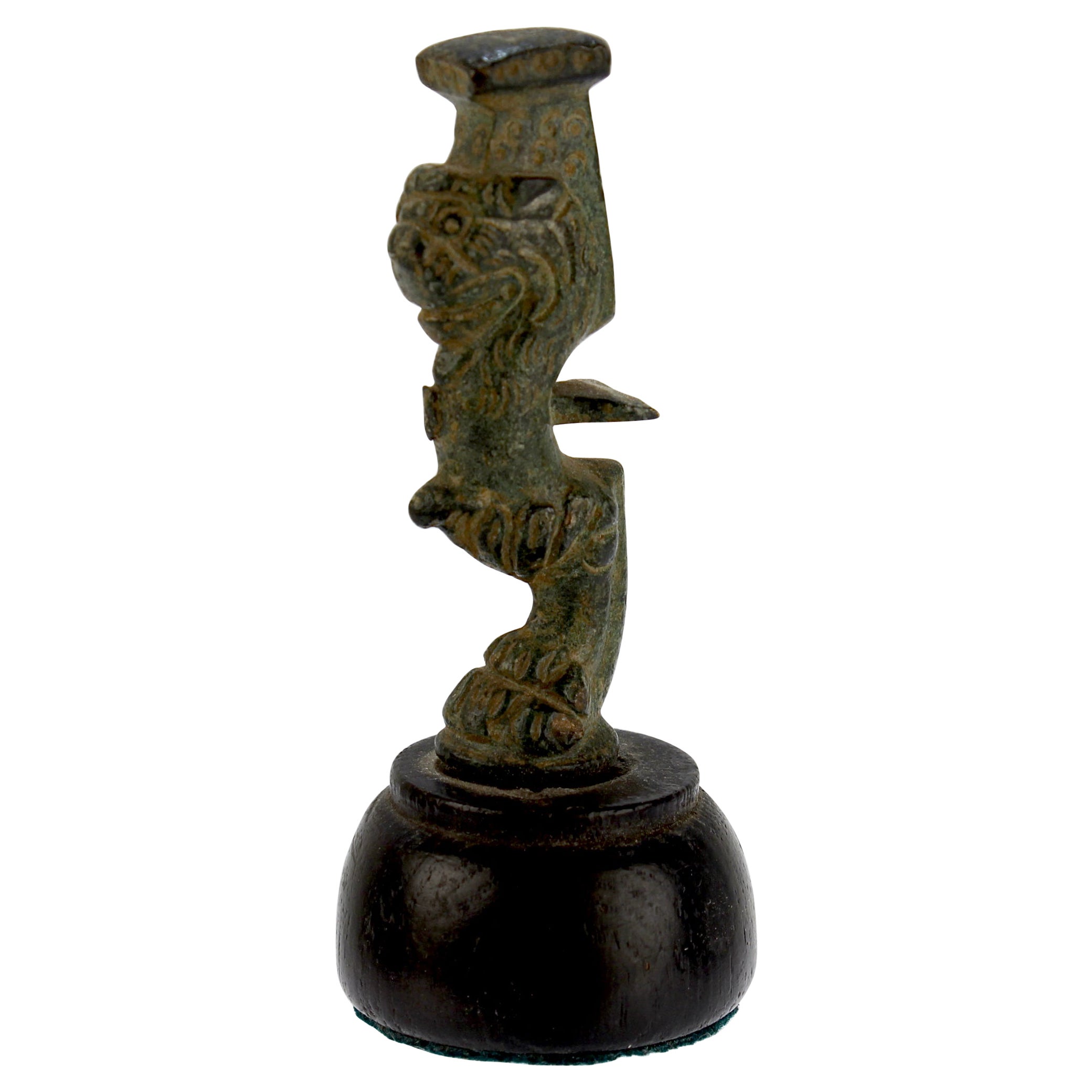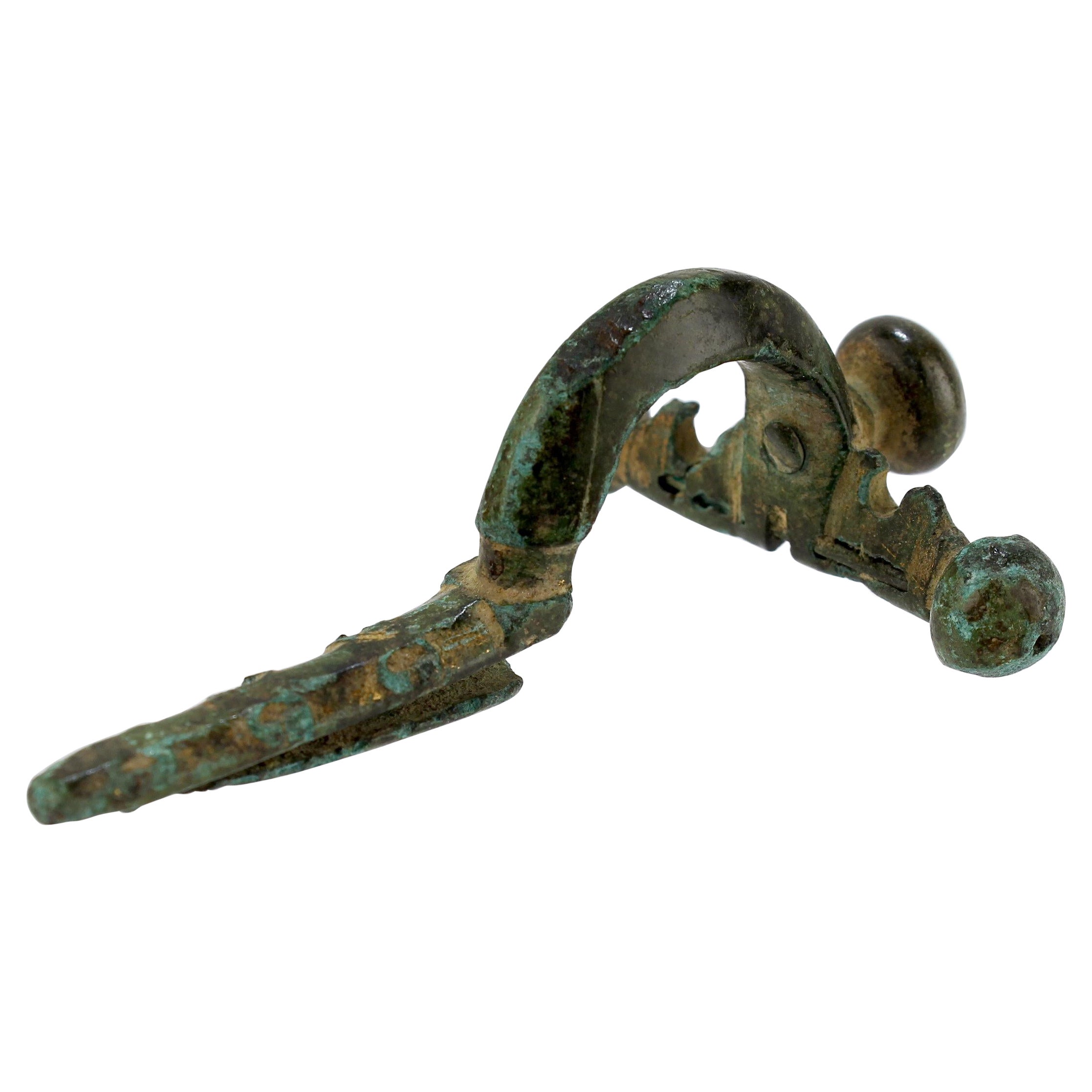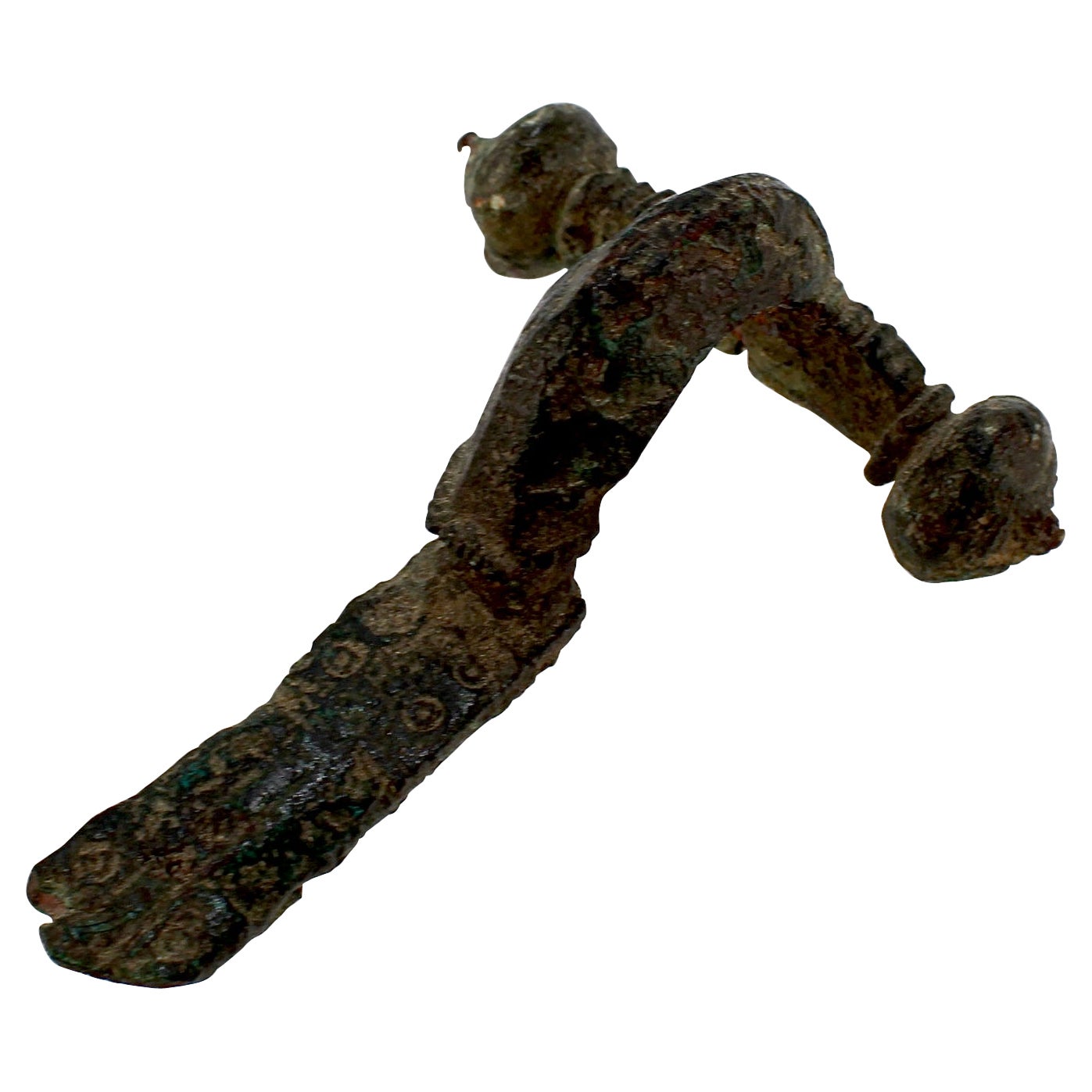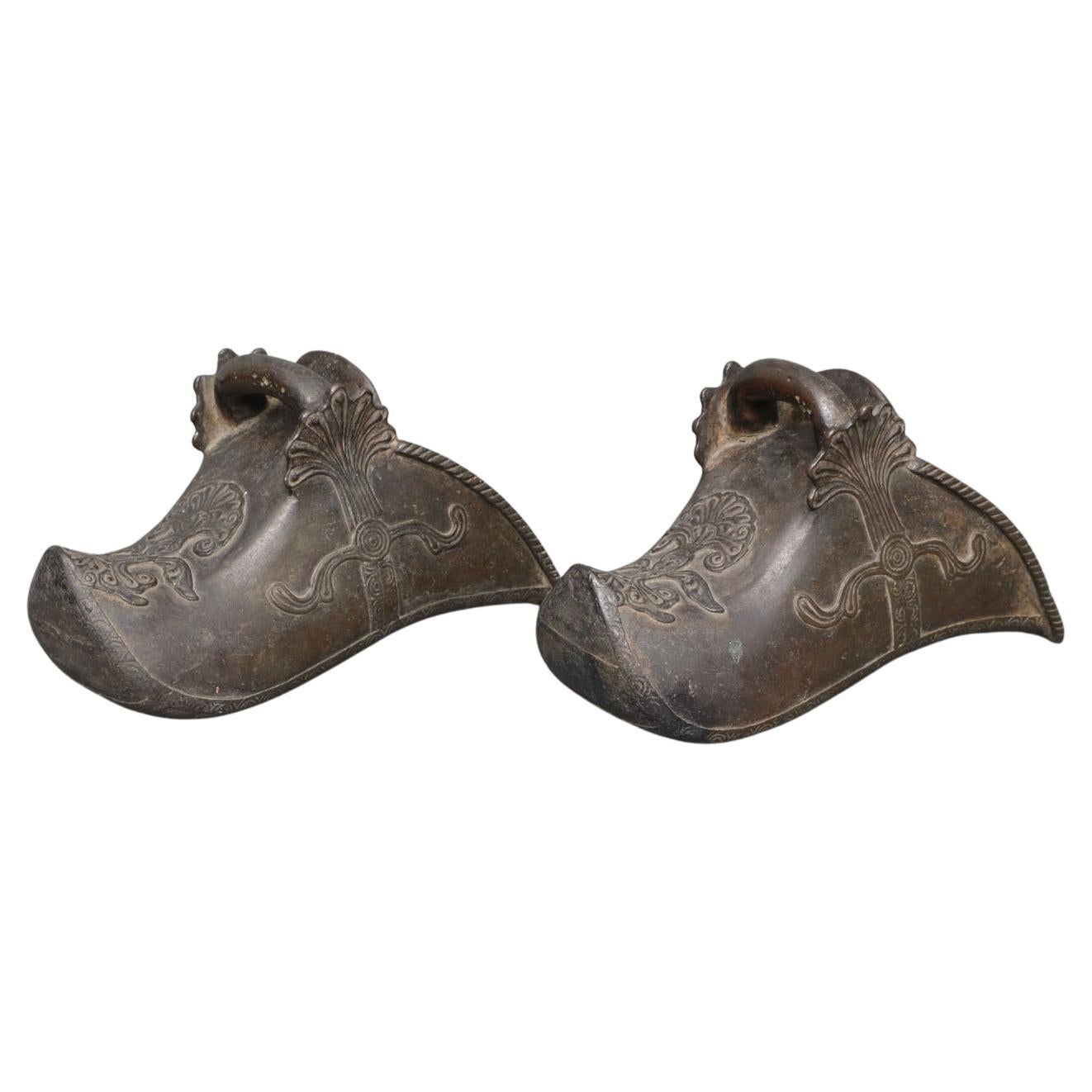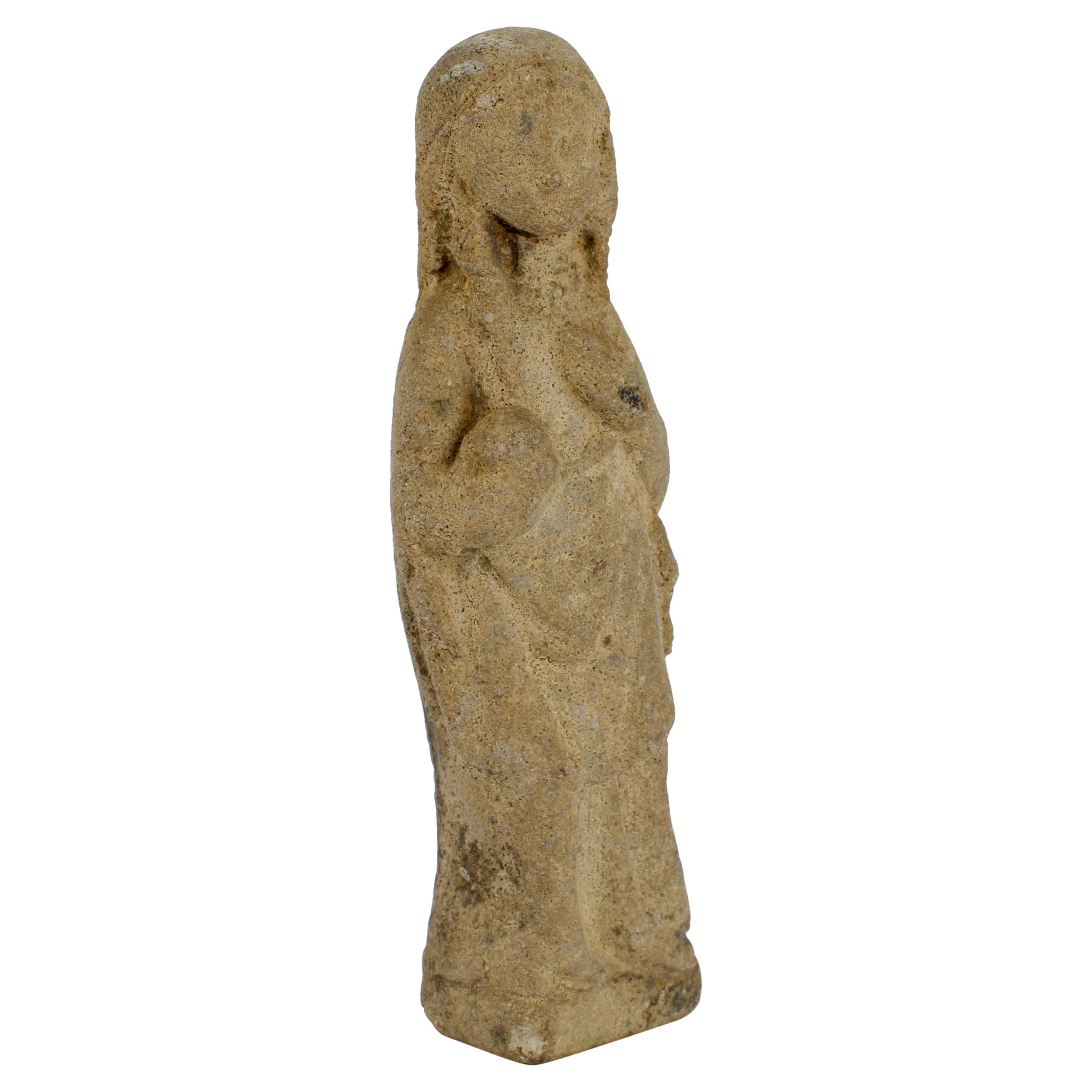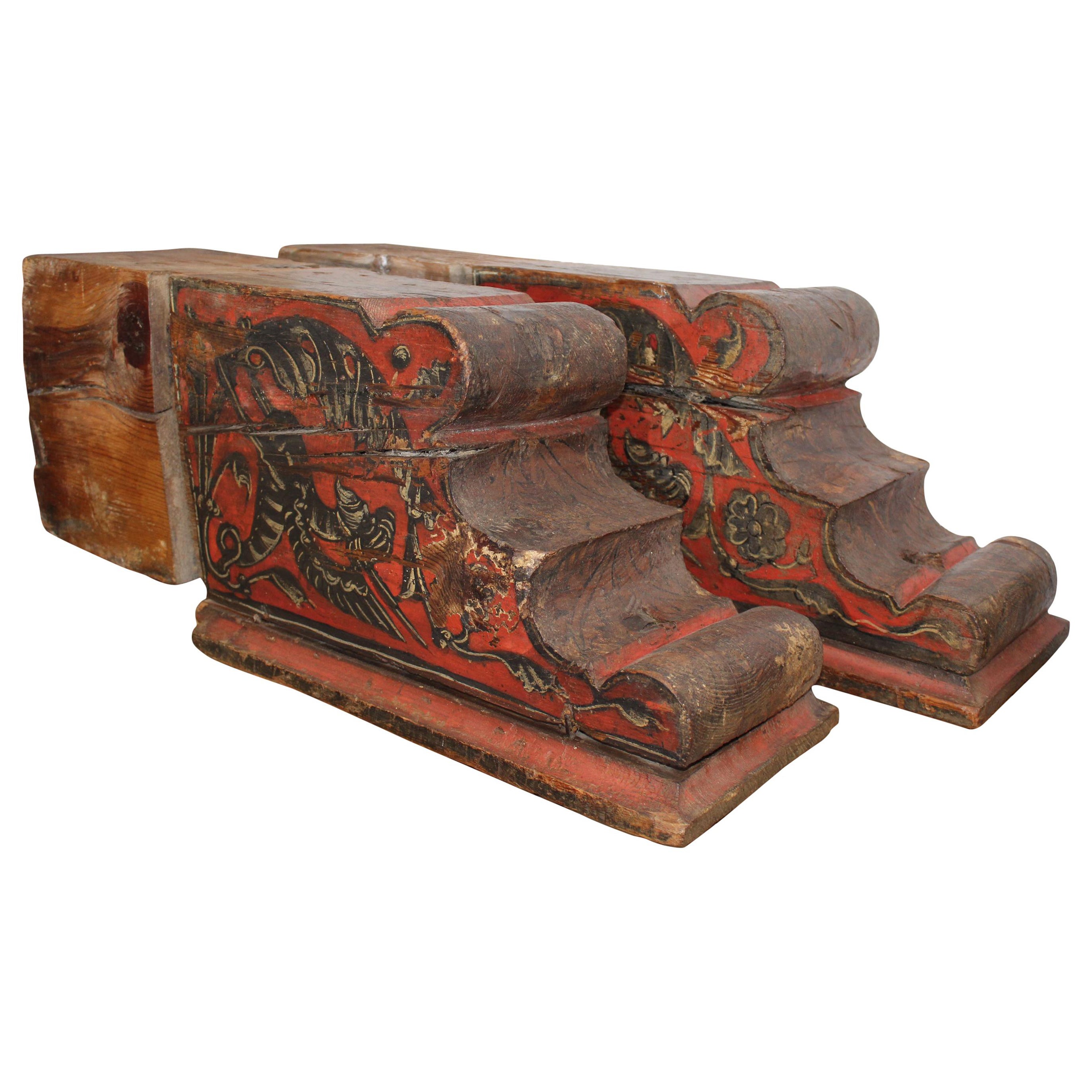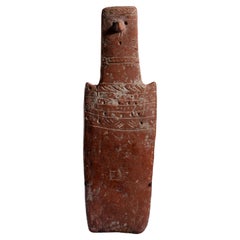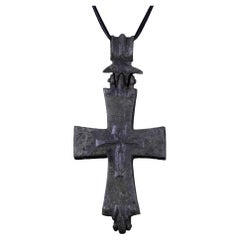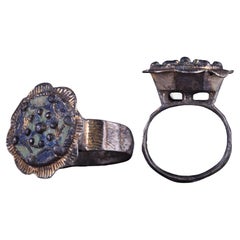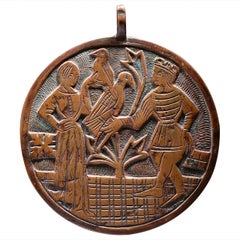
Medieval Bronze Heraldic Horse Pendant or Livery Badge, 1380
View Similar Items
Want more images or videos?
Request additional images or videos from the seller
1 of 5
Medieval Bronze Heraldic Horse Pendant or Livery Badge, 1380
About the Item
- Dimensions:Height: 0.25 in (6.35 mm)Diameter: 3.25 in (8.26 cm)
- Style:Medieval (Of the Period)
- Materials and Techniques:
- Period:
- Date of Manufacture:1380 AD
- Condition:In superb condition for a genuine medieval livery pendant. Mounted on a bespoke ebony stand.
- Seller Location:London, GB
- Reference Number:1stDibs: LU105221527882
About the Seller
5.0
Recognized Seller
These prestigious sellers are industry leaders and represent the highest echelon for item quality and design.
Established in 2008
1stDibs seller since 2014
Typical response time: 7 hours
Associations
LAPADA - The Association of Arts & Antiques DealersInternational Confederation of Art and Antique Dealers' AssociationsThe British Antique Dealers' Association
More From This SellerView All
- Late Bronze Age SwordLocated in London, GBSaint Nazaire Sword, Late Bronze Age, circa 800-900 B.C. An exceptionally well preserved Bronze Age sword, with elegant, finely incised decorations,...Category
Antique 15th Century and Earlier French Abstract Sculptures
MaterialsBronze
- Bronze Age Cypriot Plank IdolLocated in London, GBCypriot Plank Idol Early Bronze Age III - Middle Bronze Age I, c. 2100 - 1850 BC. Low fired burnished earthenware pottery with lime-filled incisions A Cypriot plank idol, an iconic form of human representation from Bronze Age Cyprus...Category
Antique 15th Century and Earlier Cypriot Abstract Sculptures
MaterialsTerracotta
- Etruscan Bronze Statuette of Discus ThrowerLocated in London, GBA remarkably fine example of Archaic sculpture. A figure of a discophoros, or discus bearer, standing with his right leg forward, gripping a discus in his right hand, the left arm raised with an open palm. Described with admiration in Münzen und Medaillen's 1961 auction, "The figure is a masterpiece and illustrates with rare vividness the essence of good Etruscan sculpture...Category
Antique 15th Century and Earlier Figurative Sculptures
MaterialsBronze
- Ancient Greek Hellenistic Bronze Statuette of SatyrLocated in London, GBBeautifully cast statuette of a satyr, Greek, Hellenistic Period, 3rd-2nd Century BC, solid cast bronze The present work is a wonderful example of the finest Hellenistic style. The ...Category
Antique 15th Century and Earlier Greek Classical Greek Figurative Sculpt...
MaterialsBronze
- Ancient South Arabian Alabaster InscriptionLocated in London, GBSouth Arabian Alabaster Inscription Calcite Alabaster circa 1st century A.D. ‘’Consequently, neither white marble of Paros nor any other stone which men admire can be compared with the precious stones of Arabia, since their whiteness is most brilliant, their weight the heaviest, and their smoothness leaves no room for other stones to surpass them.’’ - Diodorus Siculus, Library of History, Book II, 52.9 This inscription, finely worked on an alabaster tablet, is a remarkably well preserved example of Ancient South Arabian script, with its distinct bold, angular forms, written in the Qatabanic dialect - that is, the dialect spoken by the people of the kingdom of Qataban, which ruled much of modern day Yemen from the 7th Century B.C. to the 2nd Century A.D. The text, which reads: ‘[... ...]sa?d and Ma?add?i- / (of the lineage) of Hawfa- / She entrusted Anb- / against any malfeasance (which would remove it) from its place’ - indicates that it likely served to commemorate a temple offering. The quality of the script, incised so neatly into the surface of the alabaster, tells us that this piece was commissioned by somebody of considerable wealth and prestige, employing a scribe of equally considerable expertise. South Arabia was known throughout the ancient world for its incredible wealth - so much so that the Romans termed the region ‘Arabia Felix’ - literally, ‘Happy, or Fortunate, Arabia.’ That wealth was built largely on the trade of spices and incense, in which the Kingdom of Qataban played a major part. According to Pliny the Elder, this was the sole country through which frankincense could be exported, first being collected in the city of Shabwa, on the South Arabian coast, and from there travelling by camel up to Gaza, to be shipped all across the Mediterranean - not only that, but all growers of myrrh across Arabia were required to give a quarter of their yield to the king of the Qatabanians. As such, the kingdom became exceedingly rich and powerful, and Pliny goes on to tell us that ‘The nations of the Larendani and the Catabani, and the Gebanitæ [...] occupy a great number of towns, the largest of which are Nagia, and Thomna (the capital of Qataban) with sixty-five temples, a number which fully bespeaks its size.’ Because of the nature of its exports, frankincense in particular - the ‘sweat of of the gods’ according to the Egyptian Book of the Dead, and perhaps most famous as one of the three gifts brought to the newborn Christ - being closely associated with the divine, South Arabia’s reputation in antiquity was as a mysterious, almost sacred, and - crucially - extraordinarily wealthy region, at the very edge of the known world; in the words of Herodotus: ‘’Enough of marvels, and yet the land of Arabia gives off a scent as sweet as if divine.’’ This inscription invokes the protection of god Anbay, the judge-oracle of the chief god ‘Amm, who he served as an attendant. Much of what we know of the religious life of the ancient South Arabians comes to us from early Islamic texts, describing what is known in Islamic scholarship as ‘Jahiliyyah’ - the age before the advent of Islam in Arabia. What comes across in much of these texts is that these religious practices placed a great deal of emphasis on sacred stones, perhaps linked to the brilliance of the alabaster which is local to the region, and which a great many of the cult-objects produced in this time are made from. Hisham ibn-Al-Kalbi’s Book of Idols records: ‘’The Arabs were passionately fond of worshipping idols [...] Whenever a traveller stopped at a place or station in order to rest or spend the night, he would select for himself four stones, pick out the finest among them and adopt it as his god, and use the remaining three as supports for his cooking-pot.’’ This inscription was once in the collection of the intrepid British-Australian travel...Category
Antique 15th Century and Earlier Yemeni Abstract Sculptures
MaterialsAlabaster
- Lightning Bolt Shaped Meteorite EndcutLocated in London, GB“This jagged exterior endcut of the Seymchan pallasite has patches of olivine-free metallic iron-nickel as well as regions where olivine and metal are more uniformly distributed. The...Category
Antique 15th Century and Earlier Natural Specimens
MaterialsOther
You May Also Like
- Massive Byzantine Bronze Reliquary Cross PendantLocated in London, GBA cast-bronze Byzantine reliquary cross pendant with two cruciform plaques that open for relic or document storage, depicting the crucified Christ on both faces. Relics, the physical...Category
Antique 15th Century and Earlier Medieval Antiquities
MaterialsBronze
- Medieval Silver Gilt Floral-Shaped Ring with Enamel InsertsLocated in London, GBAn exquisite silver gilt finger ring featuring a beautiful floral-shaped bezel with raised bosses and remnants of blue and green enamel. The ring is further embellished with several ...Category
Antique 15th Century and Earlier European Medieval Antiquities
MaterialsSilver, Enamel
- Ancient Roman Bronze Handle or ArtifactLocated in Philadelphia, PAAn antique or ancient Roman bronze element. This piece was an element of a vase or possibly handle to something larger. It has the head of...Category
Antique 15th Century and Earlier European Classical Roman Antiquities
MaterialsBronze
- Ancient Roman Bronze Leg or Artifact / ElementLocated in Philadelphia, PAA fine Ancient Roman bronze element. It appears to be a leg or support for a larger structure. The leg has a hoofed foot that supports a li...Category
Antique 15th Century and Earlier European Classical Roman Antiquities
MaterialsBronze
- Classical Walking Stick in Ebonized Walnut & Sterling Pommel w/ Heraldic CrestLocated in New York, NYThis Classical Walking Stick in Ebonized Walnut & Sterling Pommel W/ Heraldic Crest originates from France during the Late 19th Century. Features a elegant and timeless profile with ...Category
Antique Late 19th Century French Late Victorian Antiquities
MaterialsSterling Silver
- Ancient Roman Bronze Crossbow Fibula or Toga PinLocated in Philadelphia, PAA fine ancient Roman bronze fibula. A so-called crossbow fibula. From the private collection of Lawrence Majewski, who was a former conservator at the Metropolitan Museum of Ar...Category
Antique 15th Century and Earlier European Classical Roman Antiquities
MaterialsBronze
Recently Viewed
View AllMore Ways To Browse
Antique Folk Art Walking Stick
Pre Columbian Aztec
1400 Ad
Wood Carving Cowboy
Pre Columbian Beads
Pre Colombian Art
Pre Columbian Peru Chimu
Pre Columbian Nayarit
Italy Christmas Ornament
Antique Barber Items
Hermes Folk
Moche Vessel
Straight Razor
Antique Straight Razor
Chimu Pottery
Chimu Vessel
Antique Straight Razors
Egyptian Mummy Mask
